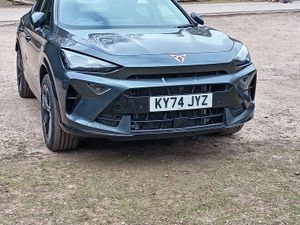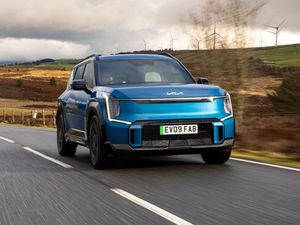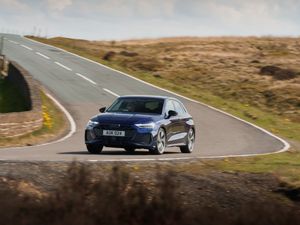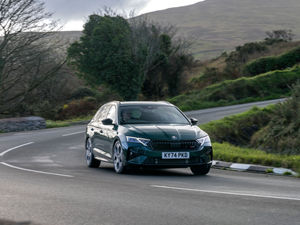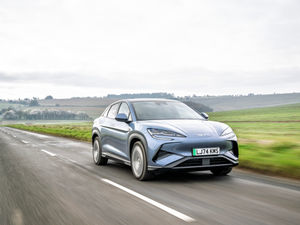First drive: The Hyundai Nexo makes us wish the future was already here
Tom Wiltshire gets behind the wheel of the Hyundai Nexo, which packs a hydrogen fuel cell powertrain
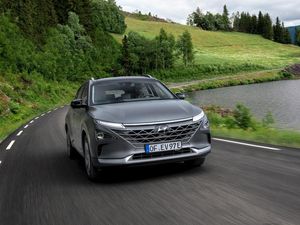
What is it?
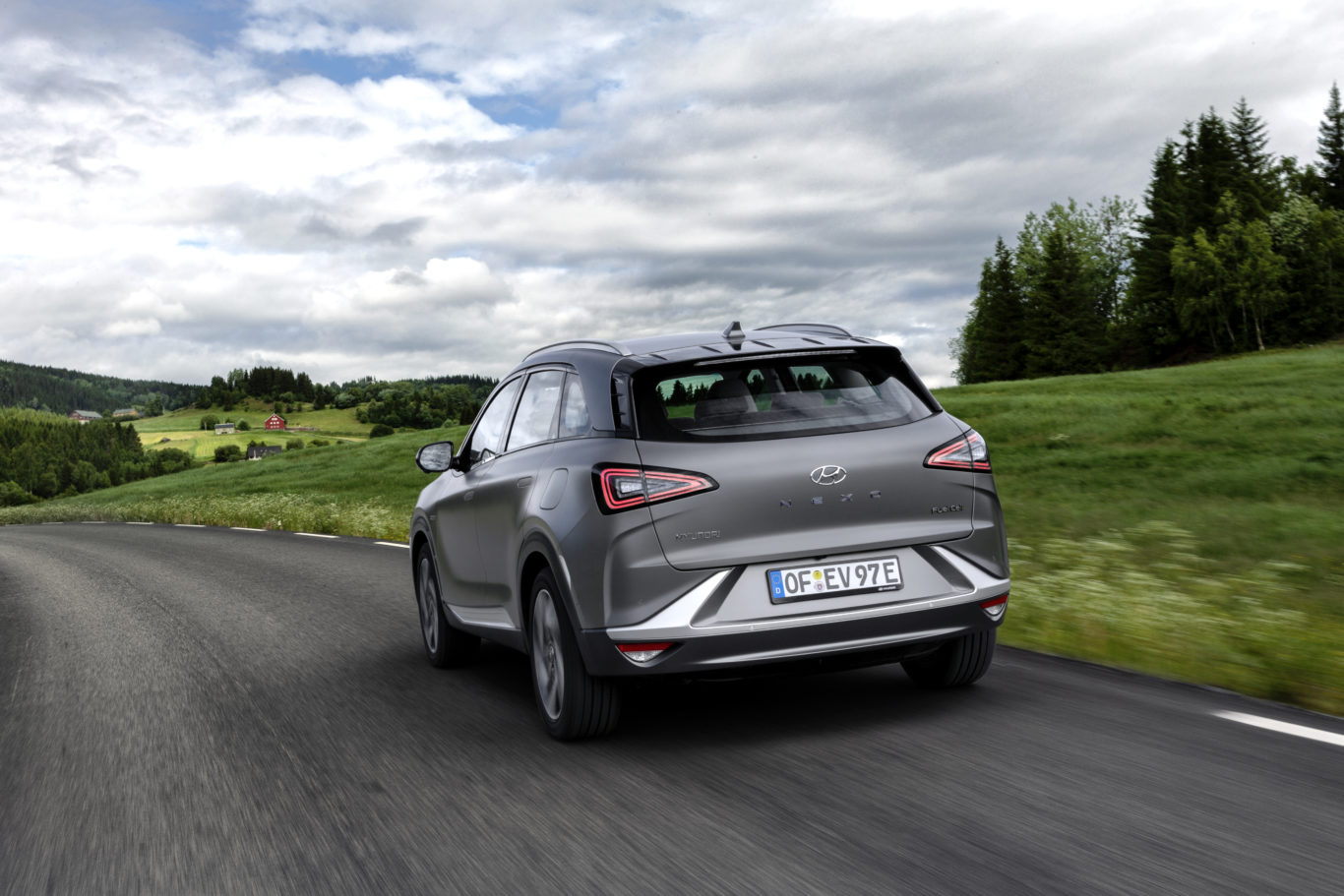
There’s a certain deadlock between car manufacturers and governments at the moment regarding the supposed fuel of the future, hydrogen. While plenty of manufacturers are poised to release fuel-cell vehicles, they’re reluctant to do so with no real refuelling infrastructure in place – and governments are unlikely to invest in hydrogen stations with so few cars around to use them. It’s fallen to Hyundai to plough forward with the Nexo – the successor to its ix35 Fuel Cell and soon to be the Toyota Mirai’s only hydrogen-powered rival in the UK.
What’s new?
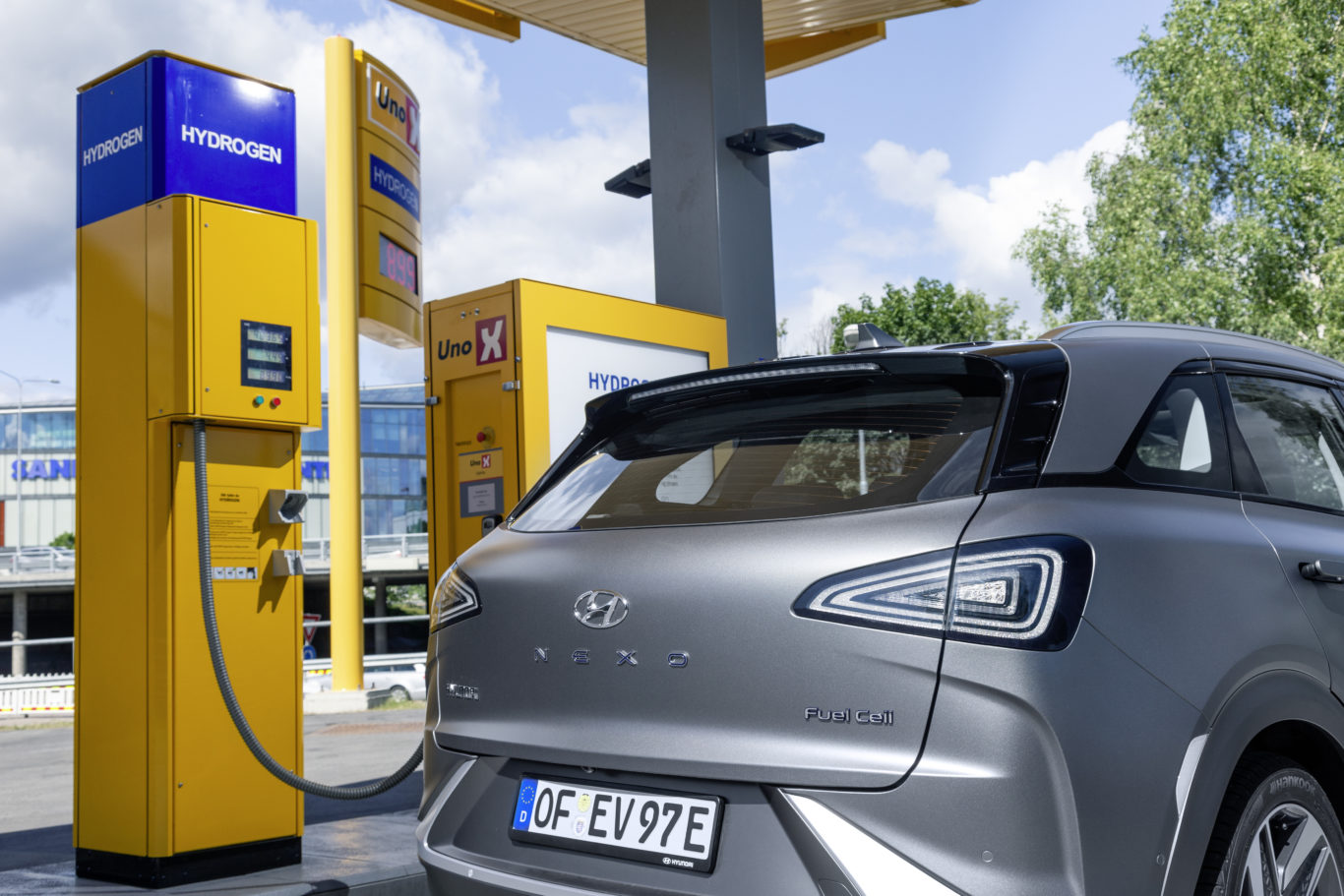
The Nexo is all new, from its futuristic powertrain to the concept car-esque styling. While the ix35 Fuel Cell was based on the existing ix35 SUV, the Nexo is its own model.
Hyundai aims to sell a few thousand Nexos a year in markets across the world, hopefully spurring on the development of a hydrogen infrastructure and providing a long-distance, quick-refuelling alternative to pure-electric vehicles.
It debuts some key new tech for Hyundai, including a new 12.3-inch infotainment display, driver-assistance features such as a blind-spot view monitor and lane-follow assist.
What’s under the bonnet?
Under the hood sits a hydrogen fuel cell stack, which takes its juice from three hydrogen tanks mounted fore and aft of the rear axle. There’s an electric motor and small battery pack too, but for most of the time the car is driven by the fuel cell.
There are a number of benefits to this. First of all there’s refuelling, which takes just a few minutes compared with the several hours you’ll wait for an electric car to charge. A full-tanked Nexo is capable of a theoretical 497 miles, too – more than any EV currently available.
The only emission from the Nexo is water, and particulate filters mean the car purifies the air around it as it drives.
The Nexo’s peak output is 161bhp, delivered in the typical electric car way. That is to say, it’s torquey, quick and smooth off the line, but power soon tails off and the Nexo isn’t the most responsive car on the motorway.
What’s it like to drive?
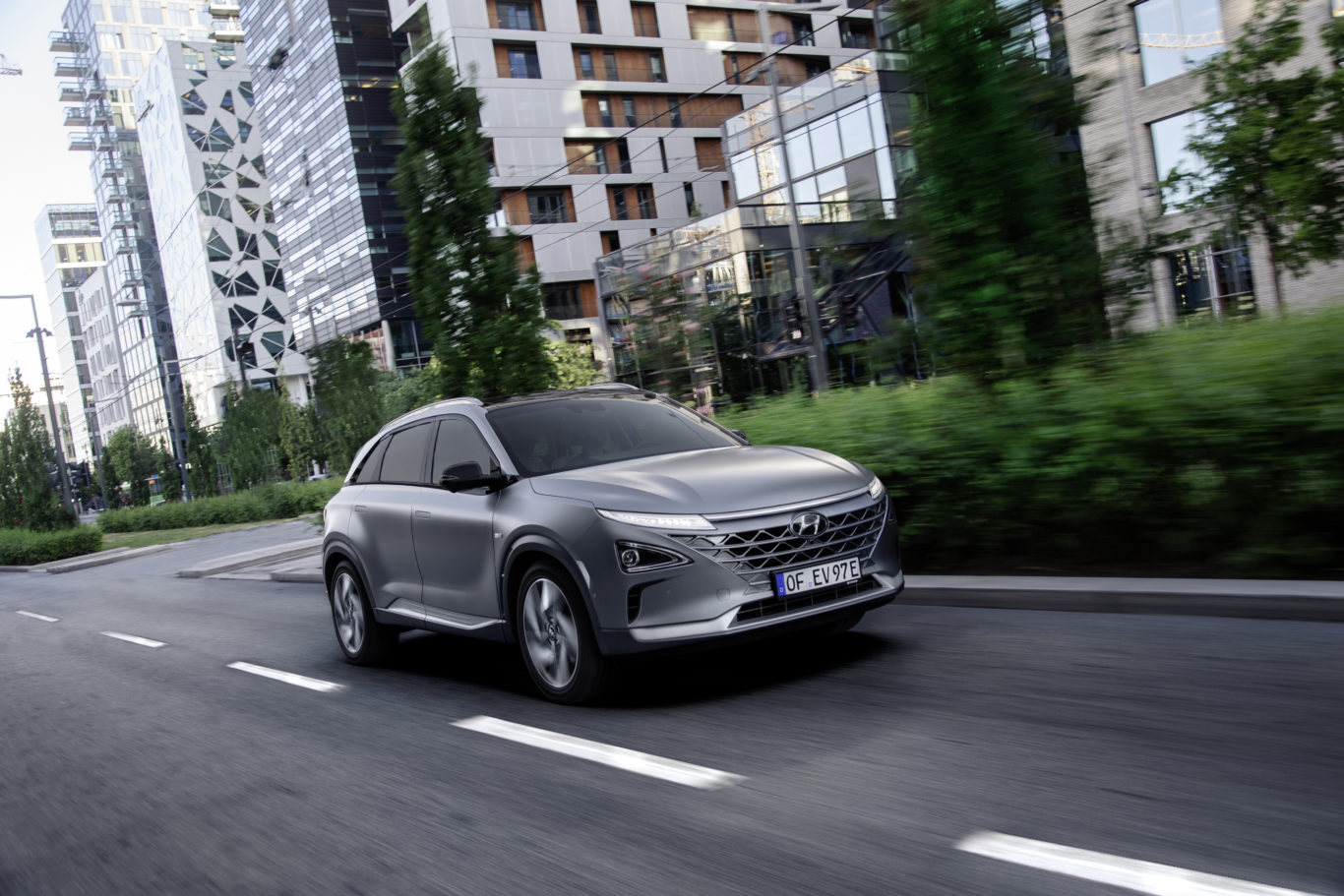
The Nexo is a heavy car and that weight is noticeable in the corners, where it isn’t exactly a sports car. That’s no real criticism, as buyers won’t be looking for groundbreaking handling prowess, but they might be disappointed by a slightly sharp-edged ride over rougher surfaces.
It’s a refined cruiser, though, with some clever aerodynamic touches on the slippery body reducing wind noise. It’s also a tech-fest, with Hyundai’s semi-autonomous systems making life just that little bit easier. Lane-follow assist – a combination of radar-guided cruise control and lane-keeping functions – works brilliantly, keeping the car steadier than most rival systems. There’s also an innovative blind spot monitoring system, which displays a camera feed of the car’s blind spot in the instrument cluster when you indicate.
The Nexo will also park itself while you’re outside it.
How does it look?
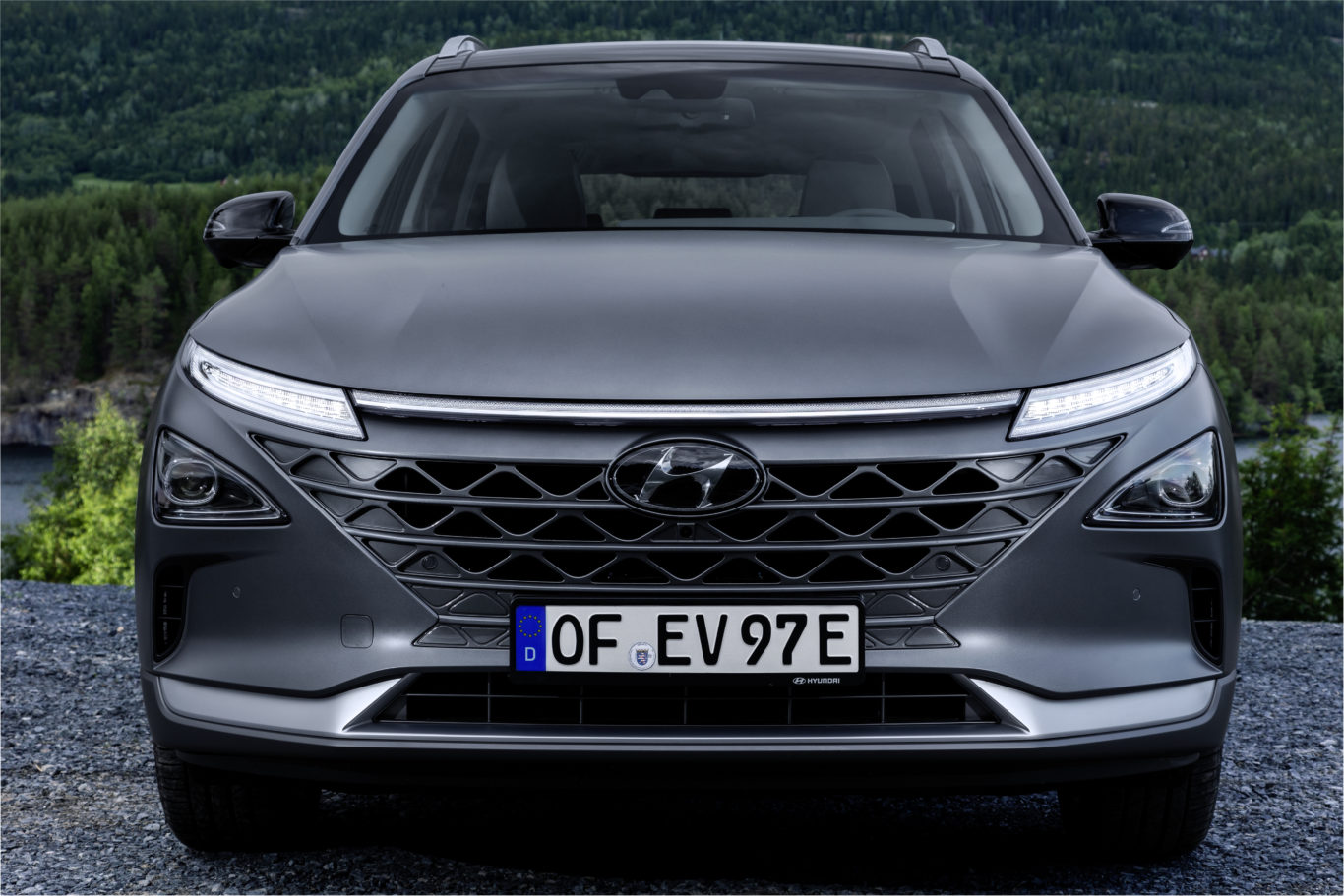
The Hyundai Nexo looks every bit the futuristic SUV and remains remarkably true to its concept. The glamorous touches don’t seem contrived or compromised, though, and the result is a slick-looking crossover with some really interesting design details.
The full-width LED light bar across the front gives an eye-catching signature, especially in the dark, while glittery tail lights give a similar effect at the rear. The streamlined alloy wheels are less successful and look a little cheap, but the sides of the car are brought back up to par with sleek hidden door handles.
Overall, the effect is close enough to a standard crossover that it won’t alienate buyers who don’t like to stand out, but there’s enough visual interest to satisfy most.
What’s it like inside?
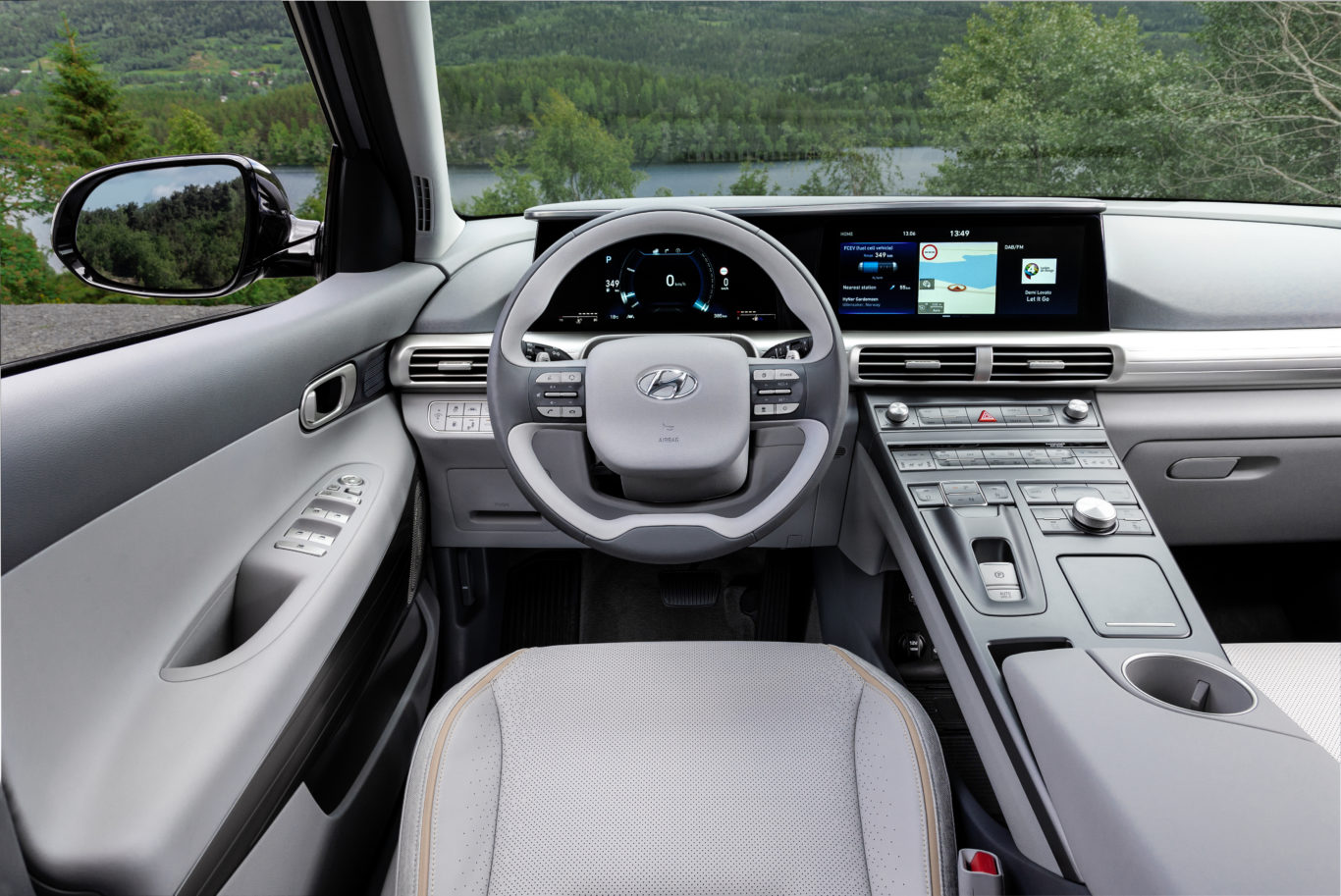
This is one of the most premium Hyundai interiors yet, and there’s a very ‘Lexus’ feel to the high-set centre console. However, it’s dotted with a rash of cheap-feeling buttons and decked out in the sort of silver plastic you’d find on an early 2000s Mercedes SLK. Very appealing to the North American market; less so to Europeans.
There’s plenty of room on offer, though, with a 461-litre boot, decent rear legroom and good storage for oddments in and around the cabin.
What’s the spec like?
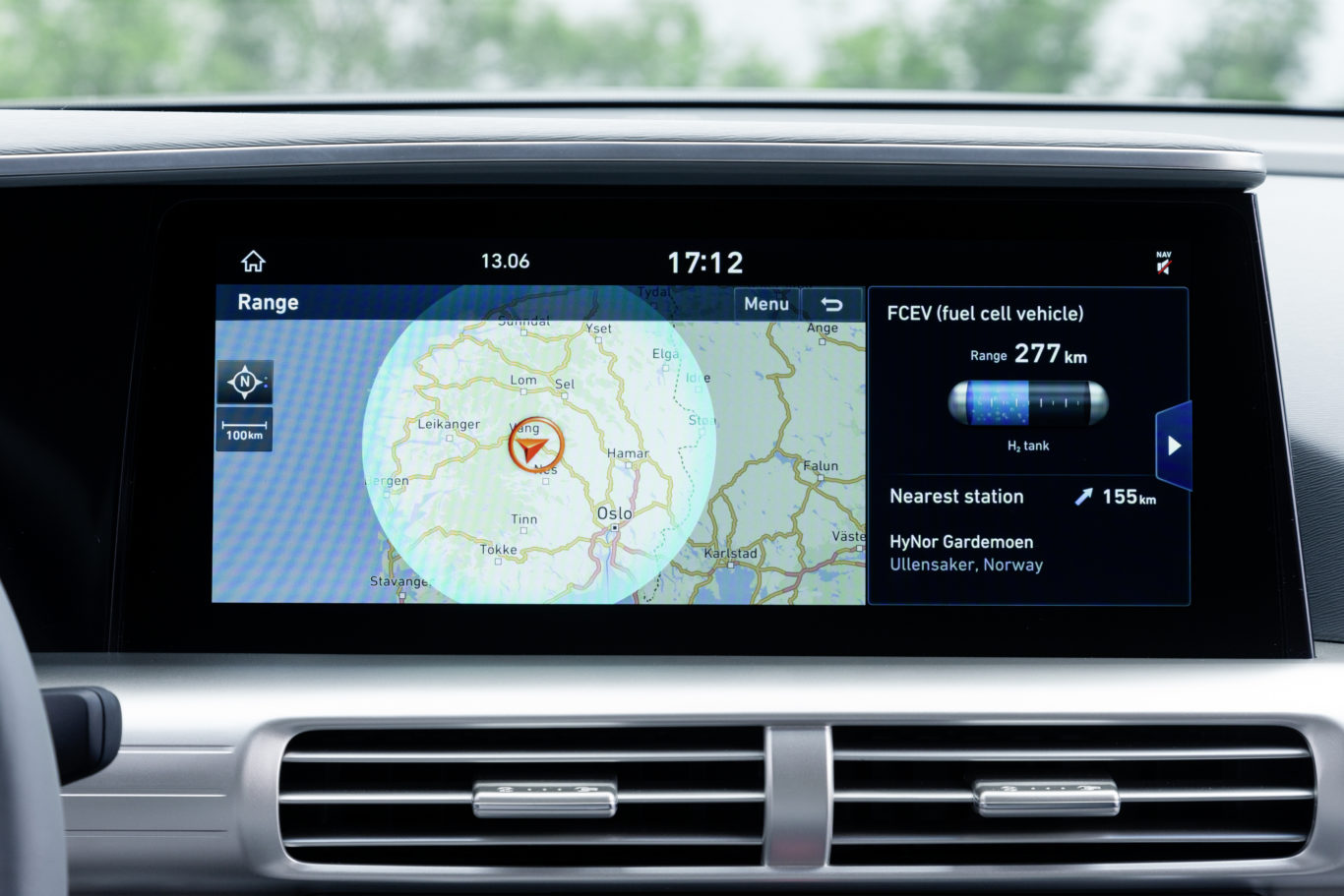
What can’t be argued with is the tech on offer in the Nexo. There’s a digital instrument display and widescreen infotainment unit that works rather well, the aforementioned safety and driver aids, climate control, heated and cooled seats, LED lights front and rear and a powered tailgate.
However, you’d expect all this from such an expensive car. Hydrogen tech is in its infancy and as such can’t be offered at the same price as electric rivals. We’d expect to see the Hyundai to be priced near £60,000, dipping to around £55,000 when the government’s electric car grant is taken into account.
Verdict

The Nexo won’t be for everyone. The biggest hurdle is of course refuelling – there are only a few hydrogen filling stations in the UK, mostly clustered around London. There’s also a hefty price to be paid for early adoption, and most buyers will be turned off at the prospect of a £60,000 Hyundai. However, early adopters, tech pioneers or simply Londoners with a desire to clean the air may all be tempted – and are unlikely to be disappointed by this futuristic car.

